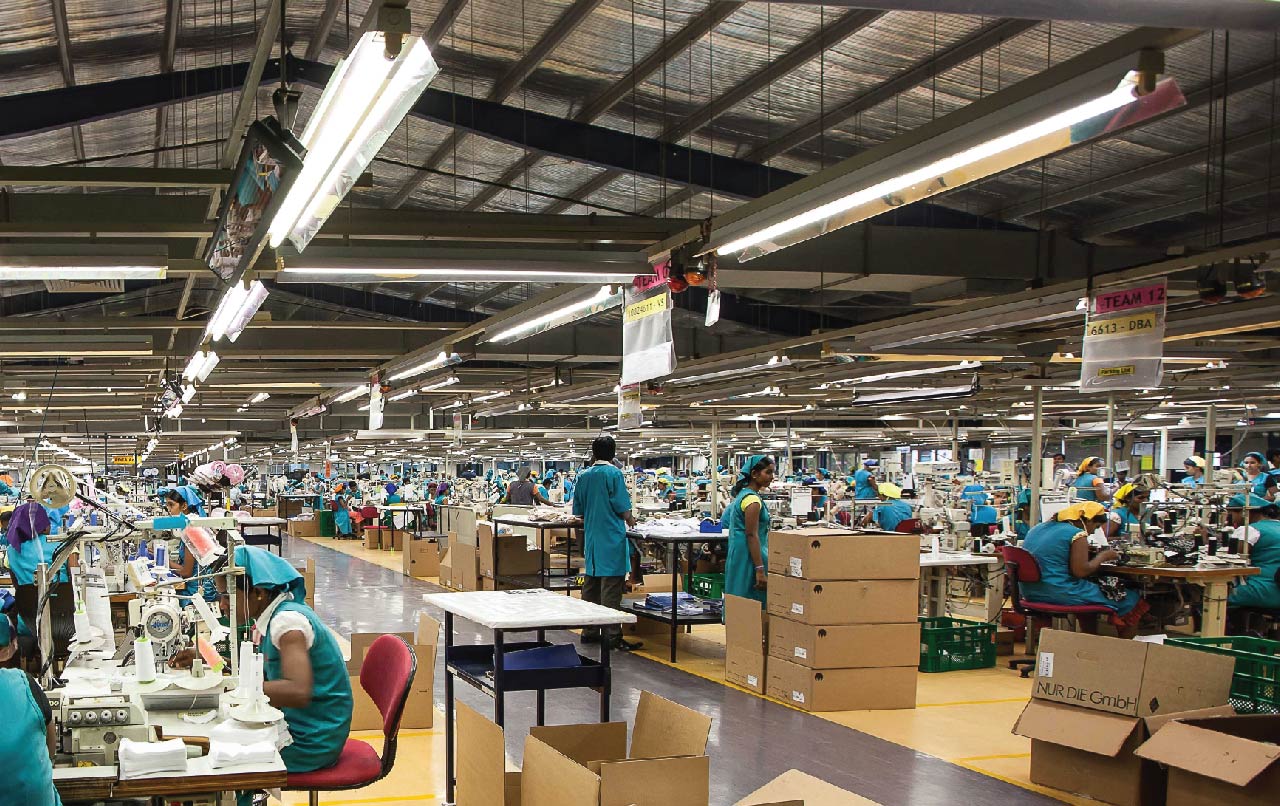Women make up around 80% of the workforce in Sri Lanka’s apparel sector. Many work on the factory floor as sewing machine operators. They specialise in stitching intricate garments for high-end brands. But lately, young women are shunning these jobs due to work pressure, inflexible work hours, social stigma, domestic duties or in favour of other tasks. Partly in response to this labour shortage and partly due to the demand to produce clothes faster, the speed of automation has picked up. But will the machines ultimately push the female factory floor workers out of these jobs? If so, what alternative work options are there for women? The Sri Lankan case is exemplary of what the 4th industrial revolution is bringing to the labour world.
Saumya’s story
For Saumya (35), the threat to her job is immediate. She has worked in the same large-scale factory for more than twelve years. Over time, she has seen a constant change in machines: some have helped make her work more manageable, some have made certain routine tasks redundant. However, the most recent change, with more machines, is reorganising the factory floor drastically. Now, workers move between multiple devices to finish an item of clothing. This means they are compelled to stand and sew for an entire eight-hour work shift, with short breaks.
The number of workers in a production line has reduced from 15 to 9, and new lines have been added. This means more lines and more output per worker. Saumya reasons that “[…] what they are trying to do is increase production and reduce staff [per line]. How else do you come down from 15 to 9 workers in a production line? […] They are a company, and they also want to keep the costs down and increase their profits, so obviously, this must be one way of getting there”.
But standing for long hours is not an option Saumya relishes. She suffers from both high blood pressure and diabetes. “I can’t take the risk of compromising my health by working standing the whole day, moving around three machines. […] But if I can’t work, I will not work. I should know better than to work until I fall sick. I don’t want to leave with an illness from the factory”.
While she is concerned about the changes in her workplace, she is also aware of the benefits of a steady income. “It is because of the factory that I was able to build our lives to this status. I don’t like to take loans, so everything we have achieved so far is through my salary. We built this house. Of course, all the work is not completed, but we have a safe place for our family, and we also bought a vehicle. So I have managed to achieve so much these past few years”.
The fact that she left school at 17 to supplement the meagre wages her father was earning as a mason limits her options for change. In addition, she has shied away from taking the skills enhancement programmes offered by the factory. “I don’t want to be part of these programmes because it means more work for me and I would have to stay on after finishing my shift. And then there is the problem of transport also, right? There are English courses and other programmes also, but I really don’t have the time since I have so much to do when I come home”.
Living in a remote village, her options for finding another steady income source are slim. But having a stable monthly income is paramount. She supports her parents with their healthcare bills, on top of meeting her own family’s expenses. As a backup plan, she is considering a self-employed activity but is still unclear what that could be.
Making sure no one is left behind
As the Sri Lankan apparel sector responds to the global value chain demand to produce garments faster, it is workers such as Saumya that feel the negative effect more strongly. With an incomplete education, limited skills and no idea of how to seek any form of state support, Saumya’s financial outlook is bleak. Without her salary, her family’s wellbeing is at risk.
No doubt, introducing new machines has helped the sector stay competitive. It has continued to increase its export value despite labour shortages. Interestingly, sewing machine operators like Saumya are not at risk of being entirely replaced by machines – yet. The kind of sewing they do is too nuanced. A mechanical device can’t complete it. But the work itself may become more difficult. So to retain skilled staff, new machine designs need to consider the worker’s wellbeing.
For those that want a job change, government policies need to “catch up” with alternative work options, in particular for women. In the absence of these, women often consider self-employment, but lack guidance. Opportunities to reskill or access to credit facilities are some of the services the government could offer. Providing women with affordable care facilities and a financial incentive are also critical. These would allow them to take time off to retrain without worrying about family commitments. Such services would help them make a smoother transition from the factory floor to a new form of employment.


